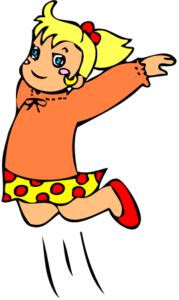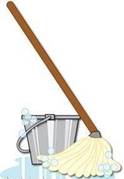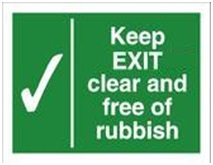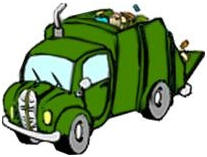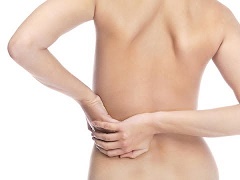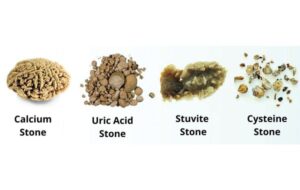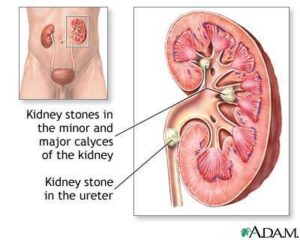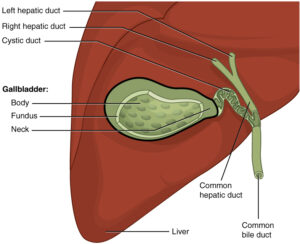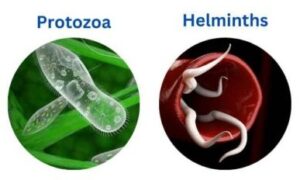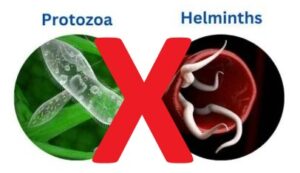Kidney stones 101 and how to prevent them
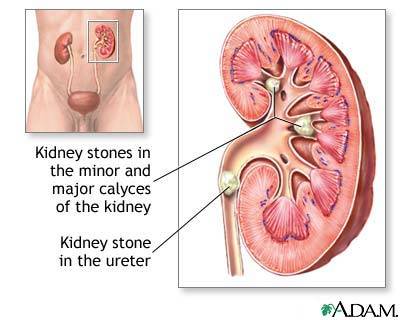

What are kidney stones?
- How do kidney stones form? From the blood flowing through them, the kidneys produce urine by removing some fluid and certain salts dissolved in that fluid. When concentration levels of dissolved salts reach the point at which the salts no longer dissolve, they precipitate out of solution and become solid again, forming a solid mass of tiny crystals in the kidney’s tubal system (nephrons), called a kidney stone.
- Kidney stone characteristics. Size ranges from that of a grain of sand to a golf ball. Depending on their composition, they may be smooth, round, jagged, spiky or asymmetrical.
- One or more kidney stones can block urine flow through the ureter (carrying urine from the kidney to the bladder) causing severe pain. Small stones may not be felt, but larger stones moving through the ureter may cause severe pain. A blockage can build up pressure in the kidney causing swelling (hydronephrosis), which over time can damage the kidney. A blockage further down the ureter can cause the muscular ureter to swell (hydroureter) initiating painful spasms.
Who gets kidney stones?
- ~600,000 persons in the U.S. develop kidney stones each year
- Men are ~4-5 times more likely to develop them than women. ~10% of men and 5% of women age 30-50 in U.S. suffer from kidney stones, with first episode at age 20-30.
- Up to 2/3 of men who have passed one stone will experience a recurrence. Average of 9 years between episodes
- Kidney stones are 4-5 times more common in whites than in African Americans
Kidney stone symptoms
- Crampy, spasmodic bouts of severe pain as stones pass into ureter – pain usually begins in the area between the lower ribs and the hip bone. As the stone nears the bladder, the pain often radiates along the inner thigh. Women may feel the pain in the vulva, while men often feel pain in the testicles.
- Nausea/vomiting and frequent/painful urination are common – can feel like you are peeing a combination of sharp broken glass and boiling acid!
- Fever and chills – usually resulting from obstruction of the ureter, which allows bacteria to become trapped in the kidney and cause a kidney infection (pyelonephritis).

DIfferent types of kidney stones?
Calcium stones
~80% of all kidney stones. Composed of calcium + either phosphate or oxalate.
Possible dietary causes:
- Calcium OXALATE stones (most common): beer, black pepper, berries, broccoli, chocolate, spinach and tea.
- Calcium PHOSPHATE stones: high levels of phosphate fertilizers used in growing vegetables; phosphate in soft drinks is not enough to be a concern, a 12oz coke contains the most (37 mg) phosphorous, and our adult need is ~700mg / day.
High blood calcium levels can result from such as:
- Renal tubular acidosis. If the kidneys do not effectively eliminate acid, it builds up in the blood. The kidney may be defective or simply overworked by an overly acid-forming diet.
- Primary parathyroidism
- Sarcoidosis
- Hyperthyroidism
- Hyperoxaluria
- Some cancers. E.g. Multiple myeloma (cancer of bone marrow plasma cells)
Struvite Stones
10% of kidney stones. Composed of magnesium ammonium phosphate
Uric acid stones
- ~5% of kidney stones
- Occur mostly in those having chronic infection in the urinary tract (UTI’s). Specifically caused by bacteria that produce urease, which makes urine more alkaline, allowing struvite to precipitate out of urine and form stones.
- Occur with increased blood levels of uric acid. Digestion produces uric acid and if the acid level in the urine is high, the uric acid may not stay dissolved and solid uric acid particles precipitate out in the urine, which can cling together to form a kidney stone.
- About 50% of those with uric acid stones have uric acid deposits in other body parts, called gout. E.g. big toe joint.
- Causes of uric acid stones
- Dietary causes. Today, excess uric acid in the body is most likely due to excess consumption of fructose in sugars, such as in sodas, candies and sweetened foods. Also, uric acid levels are increased by consumption of alcohol (particularly beer and wine) and purine-rich foods, including offal, red meat and shellfish.
- Medical or disease causes. Include chemotherapy, certain bone marrow disorders over-producing blood cells, and Lesch-Nyhan syndrome (an inherited disorder).
Cystine stones
~2% of kidney stones. People with cystine stones process dietary amino acids abnormally. E.g. Cystine is an amino acid

How to prevent kidney stones
General tactics to prevent kidney stones
- Drink more water each day. At least 2 qts. /day
- Dietary changes can be made to reduce risk of future stone formation. By aiding resorption of existing stones. Changes needed are dependent on type of stones. (See below)
- Regularly make and drink Dr. Schulze Kidney/Bladder tea in early afternoon and again in early evening. This tea tastes really good! — you can even add a dash of honey.
Dr. Schulze Kidney/Bladder tea |
Dr. Schulze Kidney/bladder Tea and Tonic can be purchased at Dr. Schulze’s website: Prices (Jun 2025): K/B tea – $28, K/B Tonic (called K/B Formula) – $32 |
How to PREVENT calcium oxalate stones
Magnesium and B6 will dissolve calcium oxalate kidney stones.
Due to a lack of magnesium, this type of stone is produced when calcium precipitates and fixes to oxalic acid in such as potatoes, spinach and tomatoes; Studies have found that magnesium and B6 help prevent recurrence of calcium oxalate kidney stones by increasing the solubility of calcium in urine. Lack of magnesium is also indirectly responsible for rampant tooth decay, poor bone development, osteoporosis and slow healing of broken bones and fractures.
Magnesium against Calcium oxalate kidney stones
Magnesium – Missing Miracle Mineral
Transdermal Magnesium Chloride
Note: Magnesium is not involved in the production of uric acid or phosphate stones
Eat less acid-forming protein and more alkaline-forming fruits and vegetables to lower blood calcium level.
High-protein foods utilize calcium to neutralize their acidic effect on body fluids, including the blood. The irony here is that people eat high protein dairy foods for their calcium content. The alkalizing calcium (brought into the blood to neutralize acid formed from protein metabolism), overloads the kidneys, which excretes much of the calcium in urine. A better choice for calcium intake is low protein /high calcium /alkalizing foods, such as carrots, sesame seeds, citrus, and greens. (High-level blood calcium also contributes to plaque build-up in the arteries). Ounce for ounce home-made, organic carrot juice is on par with milk for calcium content, and carrots don’t need to neutralize acidic, pasteurized dairy and use up calcium supplies.
Study results on whether high dose vitamin C supplementation increases risk of oxalate stones are mixed.
Oxalate is a metabolite of vitamin C and there is concern that high vitamin C intake could increase the risk of calcium oxalate kidney stones. Some studies Levine M et al, 1996; Massey LK et al, 2005; Traxer et al, 2003; but not all Auer BL et al, 1998; Liebman M et al, 1997; Wandzilak et al, 1994, have reported that supplemental vitamin C increases urinary oxalate concentrations. Whether any increase in oxalate levels increases risk for kidney stones has been examined in several epidemiological studies. Two large prospective cohort studies, one following 45,251 men for six years Curhan GC et al, 1996 and the other following 85,557 women for 14 years Curhan GC et al, 1999, reported that consumption of ≥1,500 mg of vitamin C daily did NOT increase the risk of kidney stone formation compared to those consuming <250 mg daily.
On the other hand, two other large prospective studies reported that a high intake of vitamin C was associated with an increased risk of kidney stone formation in men. Specifically, the Health Professionals Follow-Up Study collected data on dietary and supplemental vitamin C intake every four years in 45,619 male health professionals (ages 40-75 years) Taylor EN et al, 2004. After 14 years of follow-up, it was found that men who consumed ≥1,000 mg/day of vitamin C had a 41% higher risk of kidney stones compared to men consuming <90 mg of vitamin C daily. In the Cohort of Swedish Men study, self-reported use of single-nutrient vitamin C supplements (taken seven or more times per week) at baseline was associated with a two-fold higher risk of incident kidney stones among 48,840 men (ages 45-79 years) followed for 11 years Thomas LD et al, 2013. Despite conflicting results, it may be prudent for individuals predisposed to oxalate kidney stone formation to avoid high-dose vitamin C supplementation. Oregon State University
Avoid refined carbs, drinking pasteurized milk and a sedentary lifestyle – which increase blood calcium levels.
How to PREVENT uric acid stones
Alkalinization of the urine through diet can dissolve uric acid crystals /stones. The best alkalizing diet includes:
- A diet high in fruits and vegetables – (raw is best) and juices is ideal – Limit or eliminate all animal based food
- Refined sugars, junk foods, alcohol, soda, coffee, milk, or teas except for kidney cleansing teas.
- Avoid a high protein diet
- Limit alcohol consumption
- Do not consume more than 25g fructose/ day. A 12-ounce can of cola sweetened with high-fructose corn syrup, contains 22.5 g fructose
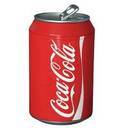

Want to try foot reflexology ?
Reflexology on the bottom of the feet has been used successfully to move kidney stones. However, you must work the area HARD – i.e. make a fist and use your knuckles to dig in deep to the area, or have someone use their elbow.

References
Auer BL, Auer D, Rodgers AL. The effect of ascorbic acid ingestion on the biochemical and physicochemical risk factors associated with calcium oxalate kidney stone formation. Clin Chem Lab Med. 1998;36(3):143-147. PubMed (Link is external)
Curhan GC, Willett WC, Rimm EB, Stampfer MJ. A prospective study of the intake of vitamins C and B6, and the risk of kidney stones in men. J Urol. 1996;155(6):1847-1851. PubMed
Curhan GC, Willett WC, Speizer FE, Stampfer MJ. Intake of vitamins B6 and C and the risk of kidney stones in women. J Am Soc Nephrol. 1999;10(4):840-845. PubMed
Fructose consumption linked to kidney stones
Liebman M, Chai WW, Harvey E, Boenisch L. Effect of supplemental ascorbate and orange juice on urinary oxalate. Nutr Res. 1997;17(3):415-425.
Massey LK, Liebman M, Kynast-Gales SA. Ascorbate increases human oxaluria and kidney stone risk. J Nutr. 2005;135(7):1673-1677. PubMed (Link is external)
Taylor EN, Stampfer MJ, Curhan GC. Dietary factors and the risk of incident kidney stones in men: new insights after 14 years of follow-up. J Am Soc Nephrol. 2004;15(12):3225-3232. PubMed
Thomas LD, Elinder CG, Tiselius HG, Wolk A, Akesson A. Ascorbic acid supplements and kidney stone incidence among men: a prospective study. JAMA Intern Med. 2013;173(5):386-388. CrossRef PubMed Green Version
Traxer O, Huet B, Poindexter J, Pak CY, Pearle MS. Effect of ascorbic acid consumption on urinary stone risk factors. J Urol. 2003;170(2 Pt 1):397-401. PubMed
Wandzilak TR, D’Andre SD, Davis PA, Williams HE. Effect of high dose vitamin C on urinary oxalate levels. J Urol. 1994;151(4):834-837. PubMed (Link is external)














